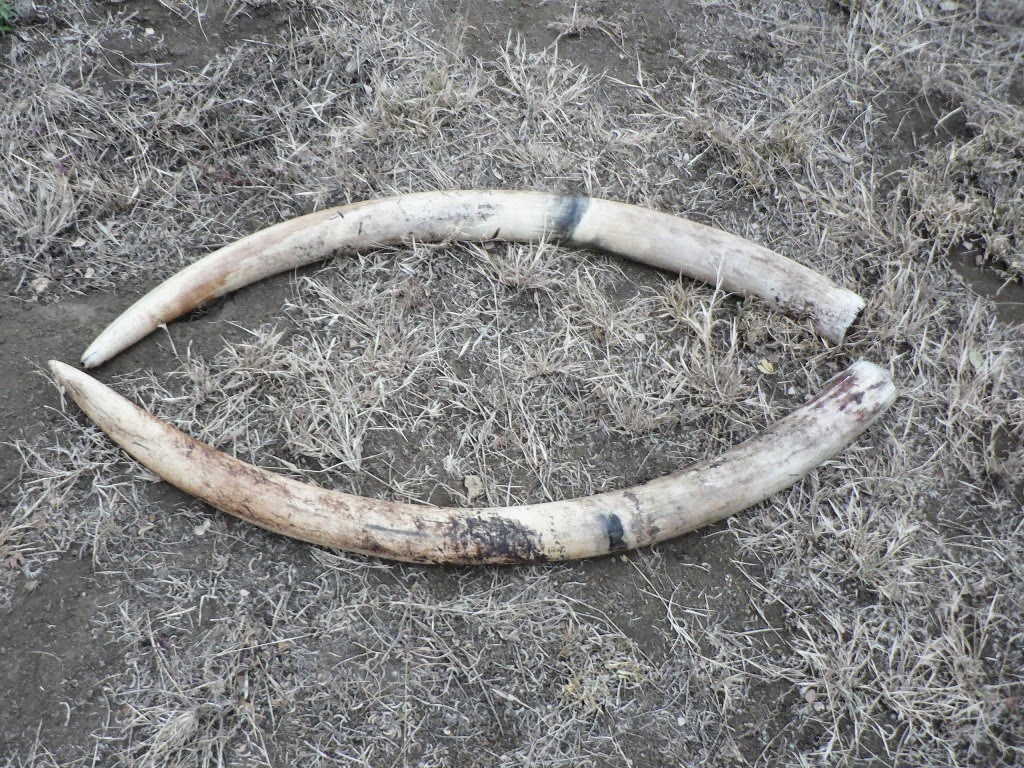It was a quiet and crisp morning, end of June as the Simba Scouts headed out on foot at daybreak to
track lions. They heard the
roaring the night before and were determined to find them. The pressure was on since the previous collaring attempt in April, where we went out for three full nights, and without being successful. This time we had to
succeed!
 |
| Tracking the lions! |
It was not long before the Simba Scouts found fresh tracks of
7 lions! They followed these tracks for a couple of kilometres up to a dense thicket in an area known as Eluai, just south of Iltilal village. The Simba Scouts decided to look around the thicket to see if there were any lion tracks coming out of the thicket. After searching for a while, and not finding any tracks apart from the ones heading into the thicket, they concluded that the lions must still be
inside, resting. Lions often use dense thickets or lava forest patches on Kuku Group Ranch as a refuge during daytime to
avoid contact (that may lead to potential conflict) with
people and their
livestock.
 |
| Conservation Coordinators Lana and Dirk work to hang the carcass in the tree |
After receiving this information the plan was clear...
conduct a calling station that evening in the vicinity of the thicket.
 |
| The vet busy preparing for the long night of collaring |
At 4 pm, the
collaring team headed out to scout the area and to prepare for the nights calling station. As the last rays of the sun disappeared behind Kilimanjaro, we started with the nights operation, starting with the distressed call of a warthog (pig squeal). Soon after, the silhouette of a
lioness appeared... followed by another... and another... and
another! Until all
7 lions (2 adult females and 5 sub-adult cubs) were there sitting and watching us curiously from behind a bush a couple of metres away! Our hearts started beating with anticipation as we waited for the vet to get into position to dart one of the adult females. A few minutes went by (which felt like hours) and then the call of the vet came over the radio telling us that he cannot get a clear shot on either of the two adult females from his position as they were obstructed by the bush. He did not want to take a chance and miss as this can only scare them off, so he decided to rather wait patiently for them to come closer to where the carcass was hanging in a tree next to his car.
To our disappointment, the lions
lost interest and moved
away! However, they stayed in the vicinity. We watched them through the night vision equipment playing and grooming one another. After some time we changed the sound to that of a buffalo calf in distress. This
triggered again the interest of the lions and they made several attempts to approach us. After about 2 hours, one of the lionesses
stood up and came directly to where the carcass was! It was perfect, and right next to the car of the vet!
 |
| Working to fix the collar and take measurements of the newly collared lion! |
We are very
delighted to introduce to you our newest member of the Kuku lion family -
Neluai! Named after the area Eluai where she was collared! She is approximately 5 years old and in
excellent condition. She has, since the collaring, visited our waterhole at CCRC several times and has been seen frequently with her group. Recently she has been spotted alone at our waterhole with a big male lion. We suspect Neluai to be mating with him!
Watch this space for more
exciting news on our collared lions!
 |
| Neluai and a large male visit the water hole at CCRC |
 |
| She is doing well! |






.JPG)
















